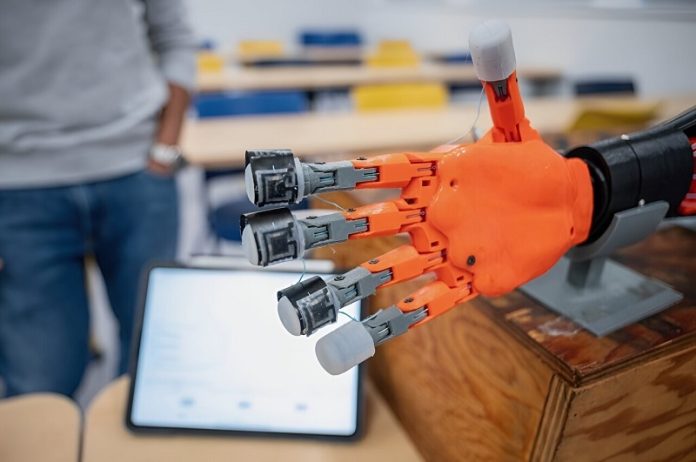
In a remarkable partnership, researchers from the University of British Columbia (UBC) and Honda have developed a new type of “robot skin” that brings us a step closer to making robots feel more human.
This innovative sensor, which is soft and stretchable, can transform the way robots and prosthetics work and feel.
What’s the big deal about this robot skin?
Imagine a robot hand that can gently pick up a ripe strawberry without squishing it, or a prosthetic arm that can hold an egg without cracking it.
This new sensor skin makes these scenarios possible. It allows machines to touch and feel much like humans do.
Dr. Mirza Saquib Sarwar, one of the brains behind this innovation, mentioned that this sensor makes machines so sensitive that they can carry out tasks requiring delicate touch.
Whether it’s holding a glass of water or a fragile egg, these machines can handle it without causing any damage.
How does it work?
This special robot skin is made mainly of silicone rubber.
If you’ve ever seen realistic movie makeup or special effects, you might be familiar with this material. What’s more, the skin can wrinkle and buckle just like ours!
The skin’s secret lies in how it senses objects. Dr. John Madden, who was also deeply involved in the study, explained that the sensor uses weak electric fields, similar to what’s used in our touchscreens. However, there’s a big difference.
This sensor isn’t just limited to touch – it can sense pressure and movement on its surface, making it perfect for robots that interact with humans.
To give you a clearer picture, think of the skin having layers of electrodes. When the skin is pressed, these electrodes move closer, and when it’s pulled or sheared, they slide and overlap differently.
These movements are detected and processed, allowing the robot or prosthetic to understand and respond to touch.
UBC’s research team joined forces with Frontier Robotics, a research wing of Honda, to make this possible.
Many might remember Honda for their famous ASIMO robot or even their walking-assist devices. Mr. Ishizaki Ryusuke from Frontier Robotics expressed their delight in collaborating with Dr. Madden’s lab, which is a powerhouse when it comes to flexible sensors.
There’s also a neat picture of a Honda robot hand showcasing this new skin. On the palm, you can see black squares, which are touch points. They’re like the sensor’s “pixels” and can detect force from different directions.
Why is this exciting for the future?
The best part? Making this robot skin isn’t complicated, meaning it can be produced in large quantities and can cover big areas. Think about robots in factories or even large prosthetics – the potential is huge.
Dr. Madden believes that we’re just scratching the surface. While the robot skin is advanced, human skin is still way more sensitive. For instance, our fingertips alone have hundreds of sensing points, allowing us to do intricate tasks.
As technology advances, sensors might soon detect temperature or even damages. But for that to happen, robots will need to be smarter. This means that the growth of sensors and artificial intelligence will go hand in hand.
This exciting development was shared in the Scientific Reports journal. So, next time you think of robots, remember that they might soon feel a lot more like us!
Follow us on Twitter for more articles about this topic.



